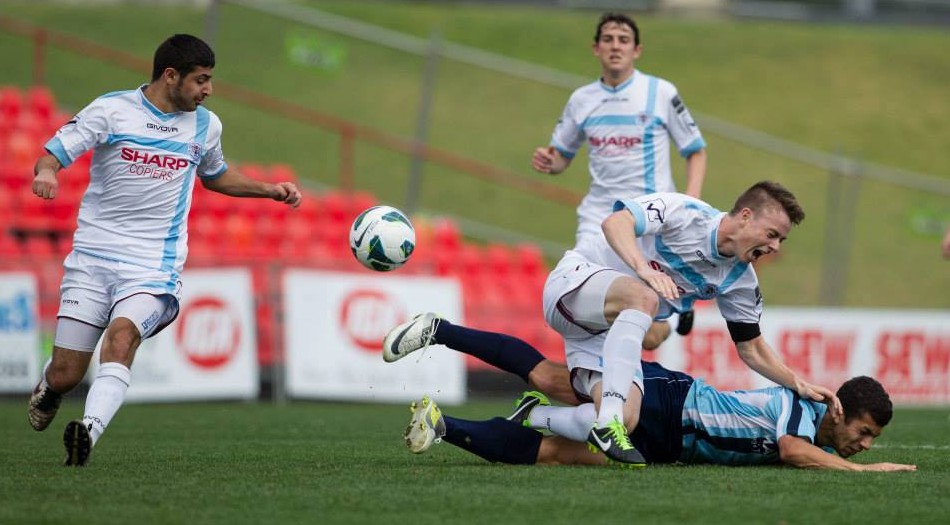What is Footballers’ Ankle?
Footballers’ ankle (anterior ankle impingement syndrome) is a condition characterised by pain on the anterior or front part of the ankle. It is believed to be due to the constant trauma to the connective tissue on the front of the ankle joint mainly caused by kicking, and more specifically because of the repetitive kicking trauma on the ankle joint.
The kicking action causes minor but repetitive trauma at the front of the ankle joint. This is due to the joint capsule being excessively stretched and from the bones at the front of the ankle being compressed. Pain is then caused when the foot is moved in the extremes of either direction up or down, known as plantar and dorsi-flexion movements. The plantar or downward movement pain is due to the tissue being overly stretched and the upward or dorsi-flexion movement pain is due to the thickening of the capsule at the front of the joint and the formation of osteophytes (extra growths of bone) in the area that cause an impingement syndrome or a squeezing or nipping of the joint capsule at the front of the ankle.
What are the symptoms of Footballers’ Ankle?
Pain in the front part of your ankle, which is likely to feel worse as you pull your toes up towards you. You may also experience a clicking sensation in the front of your ankle when moving your foot up and down. The ankle may also feel weakened and unstable during physical activities.
How is it diagnosed?
In order to diagnose footballers’ ankle one of our physiotherapists will give a full examination of the area. The assessment will look for tenderness and swelling on the front of your ankle and if your pain increases when you squat or pull your toes upwards. An X-ray may be performed in order to confirm the diagnosis and to examine if a bone spur is causing the injury. It may also be recommended to have an MRI or CT scan to rule out any further injury or complications.
How is it treated?
Initial treatment involves the usual R.I.C.E. regime together with a specific ankle joint mobilisation and capsular stretching program under the guidance of one of our physiotherapists.
If the condition persists a surgical opinion may be necessary to clear any thickened tissue or bone spurs. Rest is crucial to allow the injury chance to heal once surgery has been performed on the area. It is important that no activity which increases pain or puts added pressure on the area is undergone to prevent further injury or increasing the healing period. The patient is usually given an ankle splint and crutches to keep the area immobilized and to prevent any over bearing weight being put on the area.
Once the injury is in its final stages the patient can begin to take gradual steps back to activity which involves increase in weight bearing activity and rehabilitation exercises, as advised by your physiotherapist. Return to sports should not be done without professional advice as a patient can run the risk of aggravating the area and reducing the healing process. You should be able to return to normal activities in four to six weeks.
For more information regarding injury management and prevention contact one of the physiotherapists at Jubilee Sports Physiotherapy.























